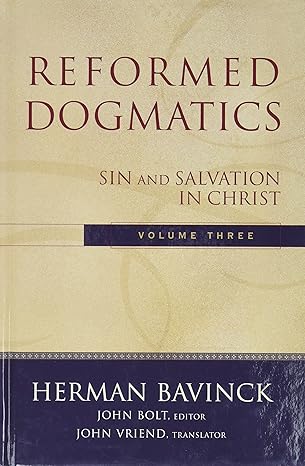A Brief Book Summary from Books At a Glance
by Steve West
Table of Contents
Part I – The Fallen World
1 The Origin of Sin
2 The Spread of Sin
3 The Nature of Sin
4 The Punishment of Sin
Part II – Christ the Redeemer
5 The Covenant of Grace
6 The Person of Christ
Part III – The Work of Christ
7 Christ’s Humiliation
8 Christ’s Exaltation
Part IV – Salvation in Christ
9 The Order of Salvation
Summary
Editor’s Note: This book is divided into two book summaries. The first summarizes Parts I-II, and the second summarizes III-IV.
Part I: The Fallen World
As the world originally came from God, it was very good. Human beings were created upright and pure, but they had the ability and possibility of sinning. Sin quickly entered God’s good world, corrupting it. God is not the author of sin, but it was part of his decree; its origins are a mystery. Whenever Scripture looks to the origin of sin, it points to the creature. Although God could have preserved human beings from sin, he chose not to do so. The tree of life and the tree of the knowledge of good and evil are integral to the Genesis text, and they must be kept together for the narrative to be coherent. Adam and Eve did not bring the human race forward into enlightenment and autonomy, they brought about a catastrophic fall. Their rebellion consisted in wanting to usurp the place of God, deciding for themselves what was good and evil. The tree of life, and the temptation of the serpent, are not metaphorical images for sexual experience, or the misuse of human reason, etc. The serpent is a being who was evil and wanted to corrupt and ruin Adam, Eve, and God’s creation. Scripture does not tell us much about the origins of Satan and evil, but it is clear that sin was birthed from the wills and actions of responsible moral beings.
Some have insisted that Darwinism disproves the Genesis account, while others have modified their interpretation of Genesis to avoid any apparent contradiction between the two. We must maintain that the fall is historical. As time goes on, the data in various fields is also corroborating the biblical facts. There is no perfect parallel between the biblical account and what we find in other religions, but there are commonalities. For example, there are widespread views of a supreme Creator, the special nature of human beings, their divinely given destiny, a golden age, a fall, warfare between good and evil, divine wrath, and propitiation.
Sin is not merely a failure of the human will, and neither is it a necessary concomitant of the finite, created order. Pelagianism asserts that human beings are born with a morally neutral nature, and it is only their free will decision that makes them a sinner (just as was the case with Adam). This view has always been rejected by the church, but it has had some degree of influence in Roman Catholic theology. Other theological ways of denying or minimizing the fullness of God’s grace have found their way into various denominations and church traditions. Some have tried to reconcile Pelagius with Augustine, but these attempts have not—and cannot—be successful. Attempting to tie sin to the failure to leave behind behaviors that characterized earlier stages of our evolutionary development is likewise unsuccessful. . . .
[To continue reading this summary, please see below....]The remainder of this article is premium content. Become a member to continue reading.
Already have an account? Sign In
